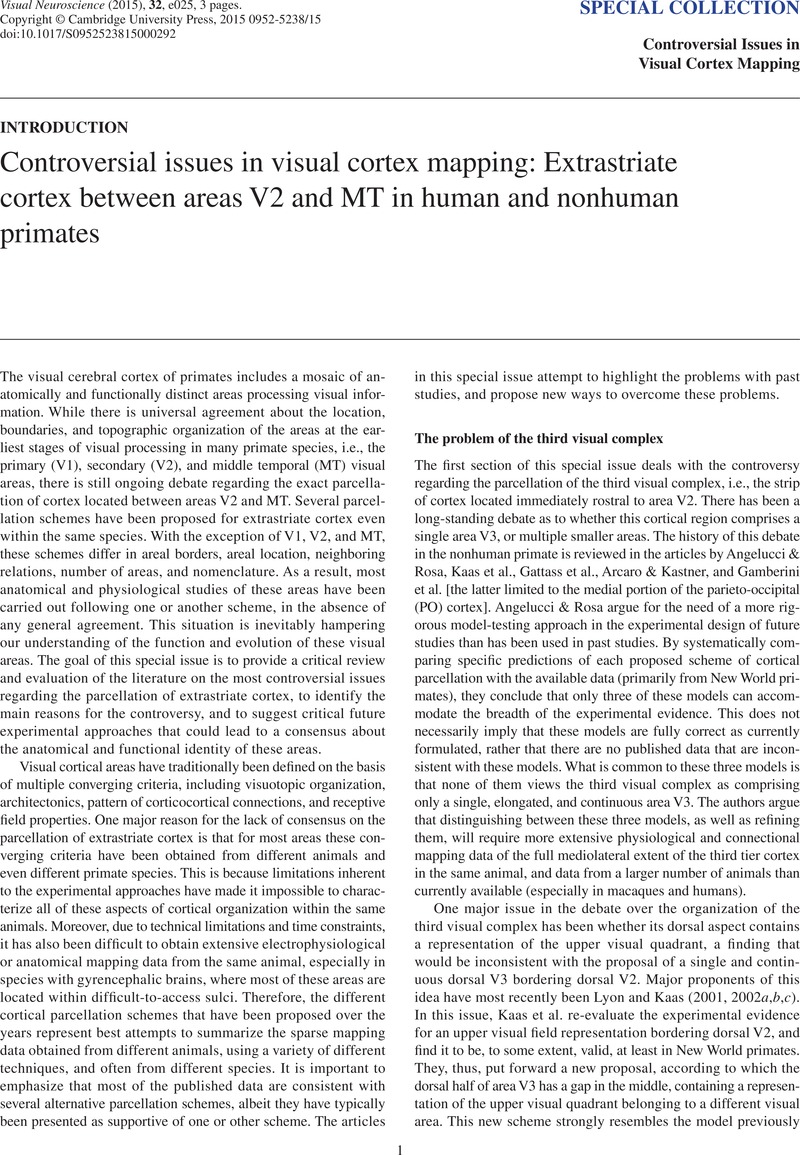Crossref Citations
This article has been cited by the following publications. This list is generated based on data provided by Crossref.
Kuehn, Esther
Dinse, Juliane
Jakobsen, Estrid
Long, Xiangyu
Schäfer, Andreas
Bazin, Pierre-Louis
Villringer, Arno
Sereno, Martin I.
and
Margulies, Daniel S.
2017.
Body Topography Parcellates Human Sensory and Motor Cortex.
Cerebral Cortex,
Vol. 27,
Issue. 7,
p.
3790.
Haque, Sameen
Vaphiades, Michael S.
and
Lueck, Christian J.
2018.
The Visual Agnosias and Related Disorders.
Journal of Neuro-Ophthalmology,
Vol. 38,
Issue. 3,
p.
379.
Van Essen, David C.
and
Glasser, Matthew F.
2018.
Parcellating Cerebral Cortex: How Invasive Animal Studies Inform Noninvasive Mapmaking in Humans.
Neuron,
Vol. 99,
Issue. 4,
p.
640.
Vanni, Simo
Hokkanen, Henri
Werner, Francesca
and
Angelucci, Alessandra
2020.
Anatomy and Physiology of Macaque Visual Cortical Areas V1, V2, and V5/MT: Bases for Biologically Realistic Models.
Cerebral Cortex,
Vol. 30,
Issue. 6,
p.
3483.
Li, Xiaolian
Zhu, Qi
and
Vanduffel, Wim
2021.
Myelin densities in retinotopically defined dorsal visual areas of the macaque.
Brain Structure and Function,
Vol. 226,
Issue. 9,
p.
2869.
Sedigh-Sarvestani, Madineh
Lee, Kuo-Sheng
Jaepel, Juliane
Satterfield, Rachel
Shultz, Nicole
and
Fitzpatrick, David
2021.
A sinusoidal transformation of the visual field is the basis for periodic maps in area V2.
Neuron,
Vol. 109,
Issue. 24,
p.
4068.
Shimaoka, Daisuke
Wong, Yan Tat
Rosa, Marcello G.P.
and
Price, Nicholas Seow Chiang
2024.
Naturalistic movies and encoding analysis define areal borders in marmoset third-tier visual cortex.
Progress in Neurobiology,
Vol. 240,
Issue. ,
p.
102657.
Froesel, Mathilda
Fitzgerald, Nora E.
Zhu, Qi
and
Vanduffel, Wim
2025.
Reference Module in Neuroscience and Biobehavioral Psychology.
Meyer, Emily E.
Martynek, Marcelina
Kastner, Sabine
Livingstone, Margaret S.
and
Arcaro, Michael J.
2025.
Expansion of a conserved architecture drives the evolution of the primate visual cortex.
Proceedings of the National Academy of Sciences,
Vol. 122,
Issue. 3,


